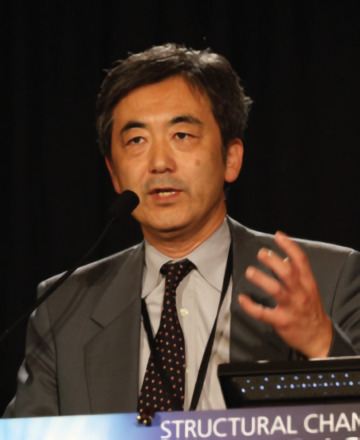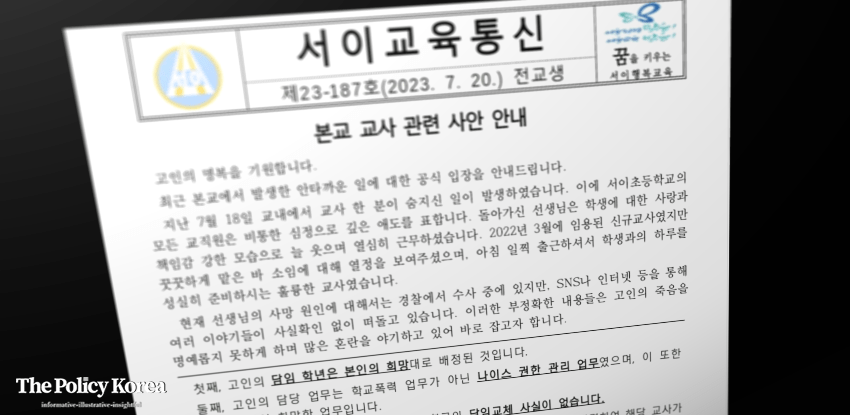[동아시아포럼] 일본은행 신임 총재 우에다, 통화정책 집도의의 무게
2022년 일본 인플레이션은 BOJ 예상치 2배 초과 엔화 약세, 인플레이션의 주요 원인 재정 위기의 궁극적 책임은 중앙은행이 아니라 일본 정부에 있어
[동아시아포럼]은 EAST ASIA FORUM에서 전하는 동아시아 정책 동향을 담았습니다. EAST ASIA FORUM은 오스트레일리아 국립대학교(Australia National University)의 크로퍼드 공공정책 학교(Crawford School of Public Policy) 산하의 공공정책과 관련된 정치, 경제, 비즈니스, 법률, 안보, 국제관계 및 사회에 대한 분석 및 연구를 위한 플랫폼입니다.
저희 폴리시코리아(The Policy Korea)와 영어 원문 공개 조건으로 콘텐츠 제휴가 진행 중입니다.

다케다 마사히코 교수는 히토츠바시 대학 국제 및 공공정책대학원의 응용경제학 대학원 교수입니다. 다케다 교수의 연구 관심 분야는 아시아를 중심으로 한 경제 정책과 개발입니다.
많은 선진국 중앙은행들이 금융 불안정이 확산하는 와중 인플레이션에 대처하는 방법에 대한 딜레마에 직면해 있습니다. 한편 일본은행(BOJ)은 BOJ만의 독특한 딜레마에 직면해 있습니다.
2022년 일본의 인플레이션은 BOJ의 목표치인 2%를 훨씬 상회하는 4%에 달했습니다. BOJ가 인플레이션을 일으키기 위해 양적 및 질적 완화를 시작한 지 10년이 지난 지금, 기대했던 것보다 훨씬 높은 인플레이션이 발생하고 있습니다. 하지만 통화정책을 정상화하려는 시도는 하지 않고 있습니다. 그 결과 엔화 환율이 급격히 하락했습니다. 엔화 급락은 단기간에 그쳤지만, 2022년 이후 엔화 약세는 인플레이션의 주요 원인 중 하나입니다.
엔화 약세로 인해 수입 가격은 상승한 반면 명목 임금은 계속 정체되고 있습니다. 인플레이션의 회복은 실질 소득을 약화시켰기 때문에 축하할 만한 이유가 거의 없습니다. BOJ는 물가와 임금 인상의 ‘선순환’이 일어나지 않는 한 정책 목표를 지속적이고 안정적으로 달성할 수 없다고 주장해 왔습니다.
통화정책을 바꾸지 않는다고 해서 선순환이 이루어지지 않는 것은 아니며, 양적 및 질적 완화가 수년간 물가와 임금 상승을 이끌어내지 못했기 때문에 이 주장은 오해의 소지가 있습니다. 그럼에도 불구하고 2022년 11월 이후처럼 엔화 하락세가 멈추지 않는다면 결국 원가 상승에 따른 가격 인상이 제자리를 찾아 인플레이션이 멈추게 될 것입니다. 따라서 높은 인플레이션 자체가 반드시 통화정책의 반전을 보장하는 것은 아닙니다.
하지만 BOJ가 할 수 있는 유용한 조절이 있습니다.
가장 먼저 수익률 곡선 조절이 있습니다. 이 정책은 일본 국채 매입을 통해 만기 10년까지 금리를 제로에 가깝게 유지하는 BOJ의 엄격한 금리 통제력을 확대하는 것입니다. 인플레이션이 가시화되지 않고 시장에 장기 금리 상승 압력이 없었을 때는 수익률 곡선 통제가 잘 작동했습니다. 그러나 2022년 전 세계적으로 인플레이션이 급등하자 공매도자들은 수익률 곡선 통제가 지속 불가능하다고 판단하고 일본 장기 국채에 대한 공격을 시작했습니다.
이후 BOJ는 공매도 공격을 막기 위해 국채 매입 규모를 늘렸습니다. 그러나 만기가 긴 채권의 수익률이 더 높아지면서 수익률 곡선(만기 대비 채권 수익률)이 10년 만기 지점에서 부자연스럽게 꼬이는 등 채권 시장의 왜곡이 뚜렷하게 드러났습니다.
구로다 하루히코 전임 총재가 퇴임하면서, 양적 및 질적 완화를 지지한다고 선언한 우에다 가즈오 신임 BOJ 총재는 수익률 곡선 관리를 잠재적 변화의 영역으로 꼽았습니다.
그러나 수익률 곡선 통제의 완화 또는 제거로 인한 금리 상승과 이러한 정책 변화가 초래할 수 있는 위험에 대해 세 가지 심각한 우려가 있습니다.
첫째, 금리 인상이 경제에 얼마나 나쁜 영향을 미칠까요? 일본은행은 환자가 계속 고통을 느끼지 않도록 저비용의 진정제를 계속 처방하고 싶은 유혹을 받을 수 있습니다. 그러나 진정제에 장기간 의존하면 환자의 회복이 늦어질 수 있습니다. 일본에서 수십 년간 지속된 저금리는 비효율적인 기업의 도산을 막았지만 동시에 경제의 성장 잠재력을 감소시켰을 가능성이 높습니다. 불안정한 경제 상황에서 금리 인상을 허용하는 것은 위험하지만, 코로나19 기간 동안 확대되었던 일본의 예상 생산량 격차는 이제 좁혀졌습니다. 지금은 과도한 약물을 점진적으로 줄이는 것에 대한 환자의 회복력을 테스트해야 할 시기로 보입니다.
둘째, 금리 인상이 금융기관의 대차대조표와 수익성에 어떤 영향을 미칠까요? 일본은행의 연례 금융시스템 보고서는 금융기관 대차대조표의 수익률 곡선이 100bp(1bp=0.01%) 상승할 경우 ‘2002년 회계연도 기록이 시작된 이래 최고 수준에 근접할 위험’이라고 평가합니다. 자본 대비 위험 규모는 ‘주요 은행의 경우 약 10%, 지방 은행의 경우 약 20%, 신협의 경우 약 30%’입니다. 수익률 곡선 통제를 포기하면 10년 만기 일본 국채 금리가 수백 베이시스 포인트(bp) 상승하여 심각한 금융 불안정을 초래할 수 있습니다. BOJ는 이러한 리스크에 철저히 대비해야 합니다.
셋째, 수익률 곡선 관리 변경이 공공 재정에 미치는 영향도 심각할 수 있습니다. 일본 재무성은 금리가 100bp 상승하면 정부의 연간 자금 조달 비용이 점진적으로 증가하여 3년 차에는 3조6천억 엔, 2023년에는 소비세 수입의 15%에 달할 것으로 추정하고 있습니다. 그러나 이러한 손실을 상쇄하기 위해 세금을 인상하거나 의료 서비스 및 노인 케어와 같은 주요 지출을 줄이는 것은 정치적으로 매우 어렵습니다. 따라서 가장 가능성이 높은 결과는 공공 부채의 빠른 증가이며, 이는 재정 위기를 촉발할 수 있습니다.
우에다 총재에겐 걱정스러운 일이지만, 재정 위기를 막아야 할 궁극적인 책임은 BOJ가 아니라 정부에 있습니다. 일본 정부는 2013년 BOJ와의 공동 성명에서 ‘재정 운용의 신뢰성을 확보하기 위해 지속 가능한 재정 구조를 확립하기 위한 대책을 꾸준히 추진해야 한다’고 언급했습니다.
진정제를 오래 사용할수록 진정제 없이 살기는 더 어려워집니다.
구로다 전임 총재는 더 빨리 각오했어야 했습니다. 그는 공공 재정과 경제의 장기적인 건전성을 위해 좋은 일을 하지 않았습니다. 수익률 곡선 정책 개혁과 양적 및 질적 완화로부터의 궁극적인 출구를 찾아야 할 우에다의 임무는 이제 더 어려워질 수 있습니다. 현재 일본 중앙은행이 직면한 딜레마는 적어도 부분적으로는 일본 중앙은행이 스스로 만든 딜레마입니다.
Bank of Japan’s new governor Ueda confronts big calls on monetary policy
While many advanced economy central banks are facing a dilemma over how to fight inflation in the middle of an outbreak of financial instability, the Bank of Japan (BOJ) is facing a unique dilemma of its own.
In 2022, Japanese inflation reached 4 per cent — well above the BOJ’s target of 2 per cent. Ten years since the BOJ began quantitative and qualitative easing to generate inflation, it is now seeing much higher inflation than it hoped for. Yet it has refused to shift gears to normalise monetary policy. This has produced a sharp depreciation of the yen’s exchange rate. Although the deep dive in the yen was short-lived, its weakness since 2022 is one of the main drivers of inflation.
The weak yen has lifted import prices while nominal wages continue to stagnate. The return of inflation has given little cause for celebration as it eroded real incomes. The BOJ has argued that until a ‘virtuous cycle’ of price and wage increases occurs, its policy target cannot be achieved in a sustainable and stable manner.
This argument is misleading because the virtuous cycle won’t come by not changing monetary policy — quantitative and qualitative easing failed to generate price and wage growth for years. Still, if the yen’s decline remains on pause, as it has since November 2022, cost-push price increases will eventually run their course, bringing inflation to a halt. So, high inflation of itself does not necessarily warrant a reversal of monetary policy.
But there are useful adjustments that the BOJ can make.
At the top of the list is yield curve control. This policy extends the BOJ’s tight control of interest rates at close to zero up to 10 years of maturity through purchase of Japanese government bonds. Yield curve control worked fine while inflation was nowhere in sight and there was no pressure in the market to push up long-term interest rates. But when inflation surged globally in 2022, short sellers saw yield curve control as unsustainable and staged an attack on long-term Japanese government bonds.
The BOJ has since ramped up its government bond purchases to push back the attack. But the distortions in the bond market are palpable — the yield curve (bond yields against time to maturity) has an unnatural kink at the 10-year mark as yields on longer dated bonds have risen higher.
As Haruhiko Kuroda exits, new BOJ governor Kazuo Ueda, who’s declared support for quantitative and qualitative easing, has singled out yield curve control as an area of potential change.
Yet there are three serious worries about the higher interest rates that will result from a relaxation or removal of yield curve control and the risk this policy shift might pose.
First, how badly will higher interest rates affect the economy? The BOJ may be tempted to keep prescribing a sedative of low cost money so that the patient continues to feel no pain. But the prolonged reliance on sedatives may slow the patient’s recovery. Decades-long low interest rates in Japan have saved inefficient firms from failing but at the same time likely reduced the economy’s growth potential. While allowing interest rates to rise is risky under precarious economic conditions, the estimated output gap in Japan, which widened during COVID-19, has now been closed. Now might be the time to test the patient’s resilience to a gradual reduction in heavy medication.
Second, what are the consequences of higher interest rates for financial institutions’ balance sheets and profitability? The BOJ’s biannual Financial System Report assesses the risk of a 100 basis point upward shift in the yield curve on financial institutions’ balance sheets being ‘close to the highest level since records began in fiscal [year] 2002’. The magnitude of that risk relative to capital is ‘around 10 per cent for major banks, around 20 per cent for regional banks and around 30 per cent for shinkin banks’. If yield curve control is abandoned, 10-year Japanese government bond yields may rise by several hundred basis points, potentially occasioning serious financial instability. The BOJ needs to be well-prepared for this risk.
And third, the impact of changes to yield curve control on public finance could also be serious. Japan’s Ministry of Finance estimates that a 100 basis point upward shift in interest rates will gradually raise the government’s annual funding costs, reaching 3.6 trillion yen in the third year, or 15 per cent of consumption tax revenue in 2023. But raising tax or cutting major expenditure on things such as medical services and aged care to offset this loss is politically very difficult. Thus, the most likely outcome is a faster increase in public debt, which could trigger a fiscal crisis.
This is worrisome for Ueda, but it is the government, not the BOJ, which is ultimately responsible for averting a fiscal crisis. As the government noted in a 2013 joint statement with the BOJ, it needs to ‘steadily promote measures aimed at establishing a sustainable fiscal structure with a view to ensuring the credibility of fiscal management’.
The longer you use sedatives, the harder it is to live without them.
Ueda’s task of yield curve policy reform and an eventual exit from quantitative and qualitative easing may be now more difficult because Kuroda didn’t bite the bullet sooner and do what is good for the long-term health of public finance and the economy. The dilemma that now confronts Japan’s central bank is one, in part at least, of its own making.



























